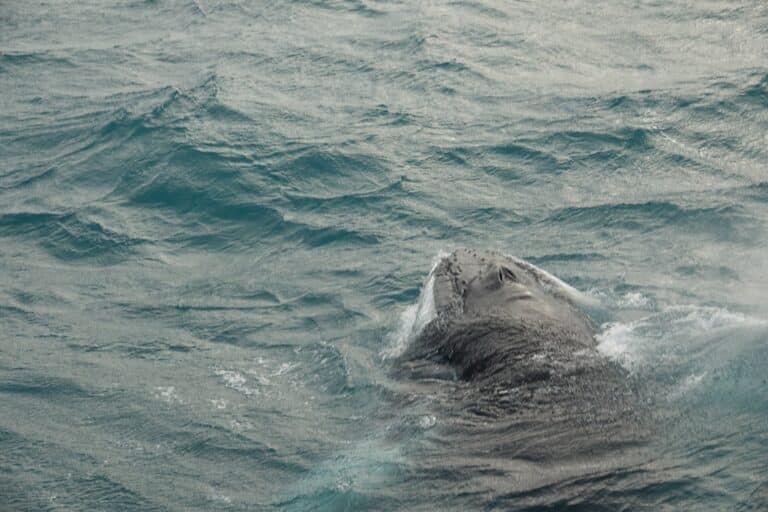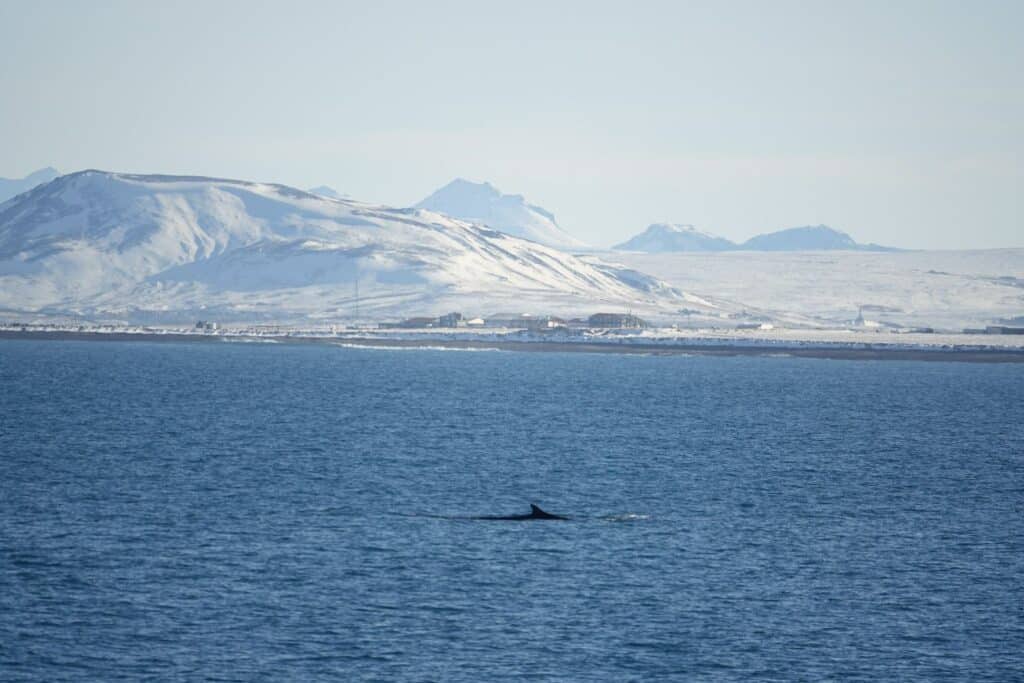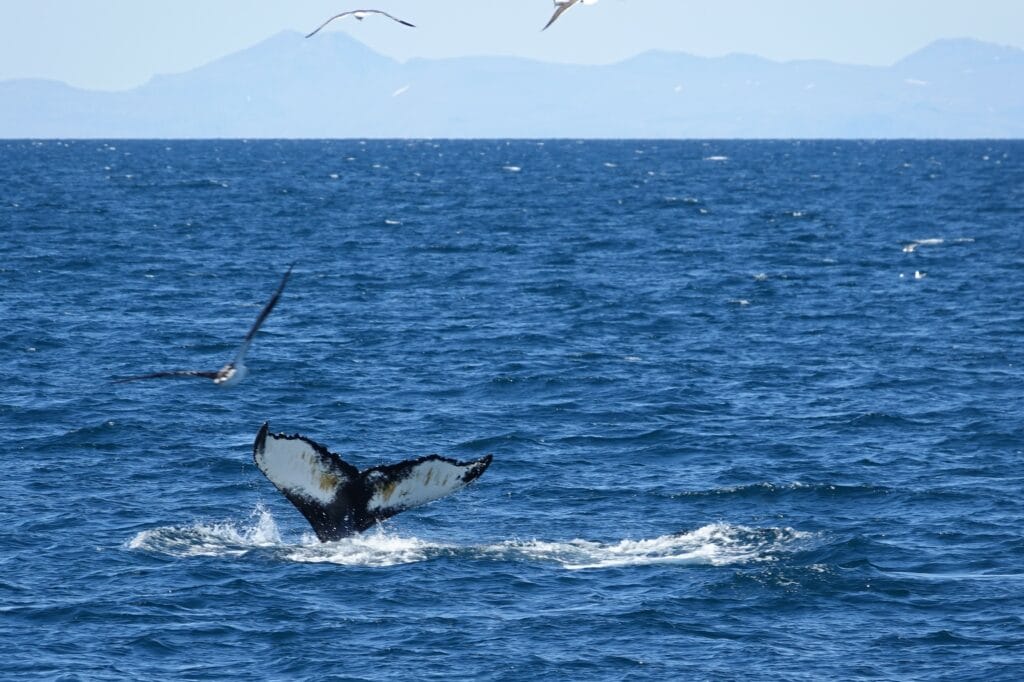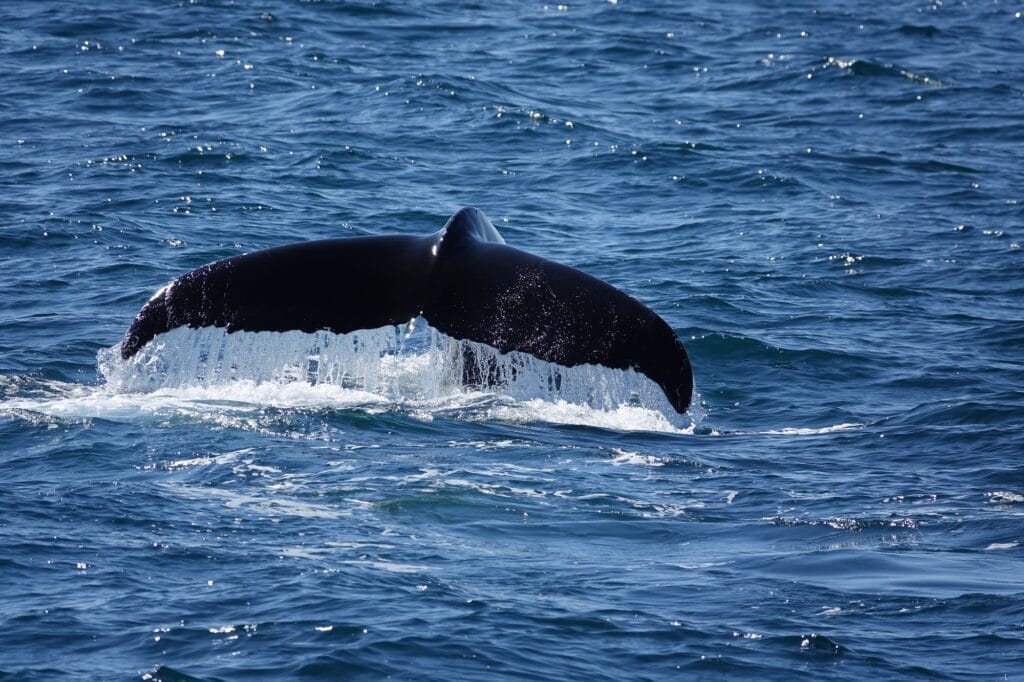Can you go whale watching in winter in Iceland?

by Lucky Byfleet
Whale watching in Iceland isn’t just a summertime activity; it’s an experience that transcends seasons, making the winter months equally compelling for enthusiasts. Contrary to popular belief, winter offers unique advantages for those seeking an awe-inspiring encounter with these majestic creatures.
Winter in Iceland is undoubtedly beautiful; Snowy mountains, blazing auroras, and the sun sitting low in the sky causing almost every daylight hour to have an ethereal golden glow. However, can you go whale watching in winter? Surely all the whales have migrated to tropical waters during the winter months?

Whale watching in winter in Iceland
Iceland’s waters are teeming with life throughout the year, providing a habitat for various whale species regardless of the season. While some species migrate to warmer climates during winter, others, like the Minke whale and Humpback whale, frequent Icelandic waters during these colder months. The nutrient-rich waters sustain an array of fish, attracting these whales seeking sustenance, ensuring ample opportunities for sighting.
Moreover, the winter landscape in Iceland is a spectacle in itself. The pristine beauty of snow-covered landscapes and dramatic coastlines add to the whale-watching experience. The sight of these beautiful creatures against the backdrop of ice-dusted fjords paints a surreal picture, elevating the overall adventure.
Weather conditions in winter
Contrary to concerns about weather conditions, reputable whale-watching tour operators in Iceland prioritize safety and comfort, offering sturdy vessels equipped to navigate winter waters. Our vessels keep passengers warm, ensuring a cozy and enjoyable trip despite the chilly temperatures.
Some people worry that it’s harder to spot whales, during whale watching in winter but that’s not true. Especially with humpbacks, because we look for the blow. As they breathe out moisture from their lungs it shoots up into the air to make a cloud of steam that can be many meters high. It’s relatively easy to spot that white blow against the blue of the sea but we also look out for birds diving into the water and anything with a dorsal fin.

For more information on how we search for whales and dolphins and learn how to be a pro-cetacean spotter yourself have a look at our guide here.
Other benefits of whale watching in winter
Winter whale-watching tours in Iceland also offer fewer crowds, providing a more intimate and immersive encounter with nature. With smaller tour groups, guides can offer more personalized insights and attention to each guest, enhancing the overall experience.
the winter season in Iceland beckons adventurers with the promise of breathtaking natural beauty, fewer crowds, and incredible wildlife encounters, making it an opportune time to embark on a memorable whale-watching expedition in these northern waters.
If you have any more questions about our ships or the whale watching trip please contact us or have a look through our FAQs.

There are loads of awesome places to learn more about whales! Try the Natural History Museum for a start.

